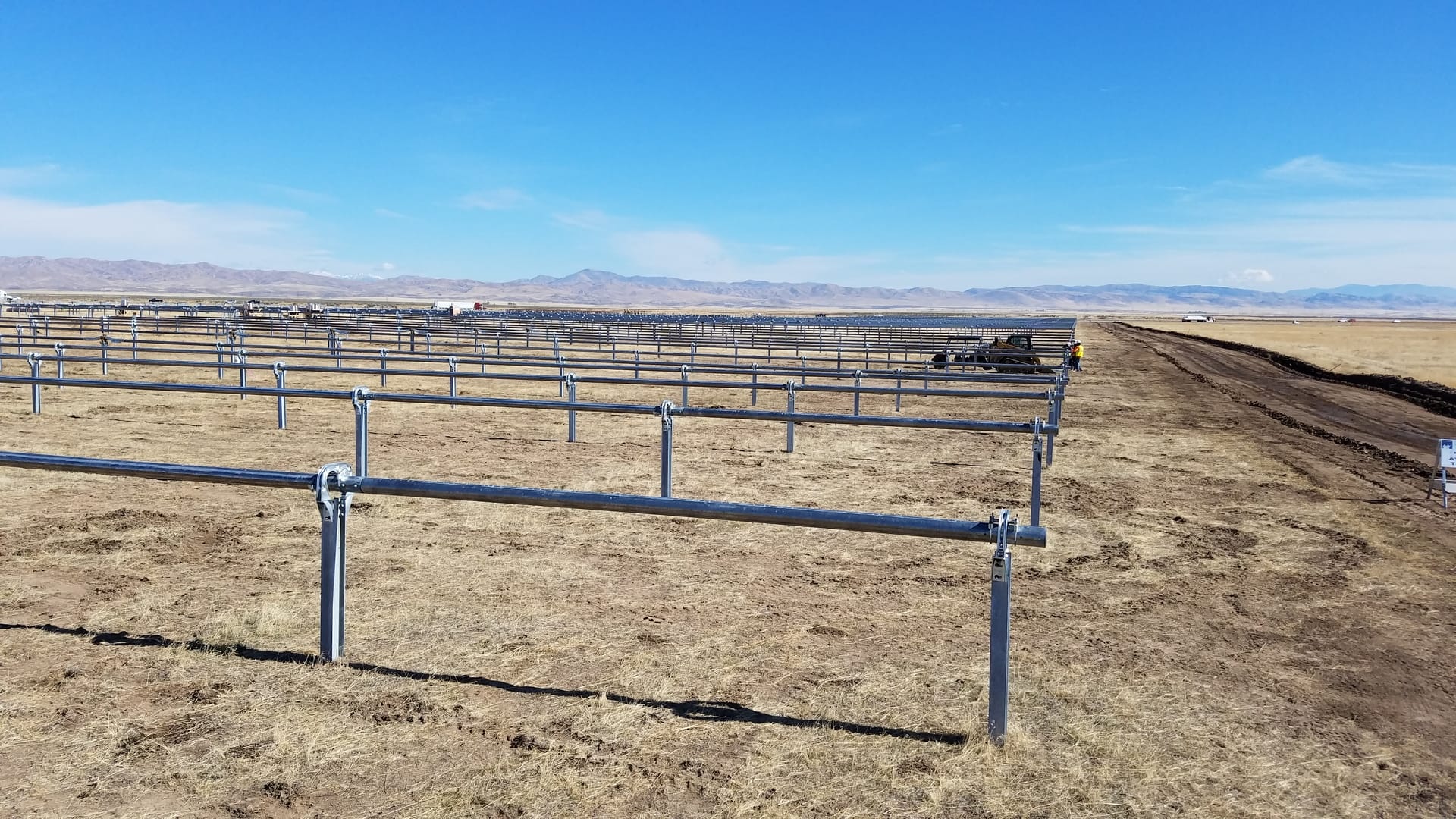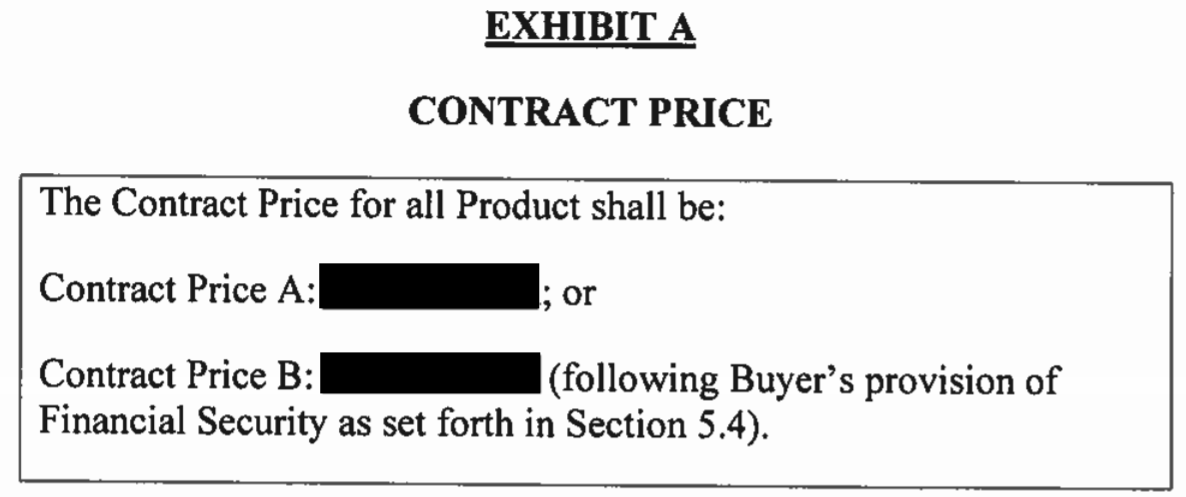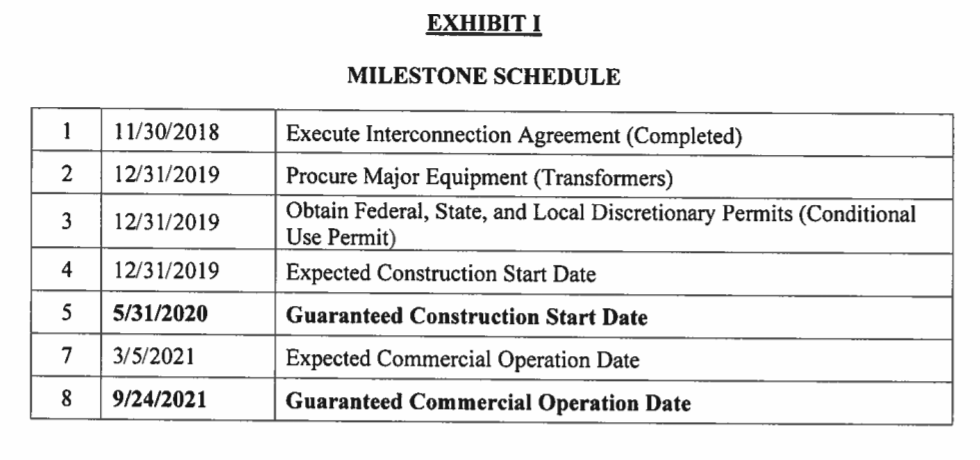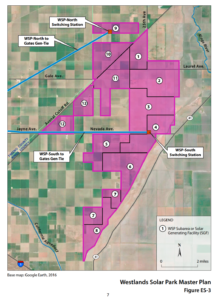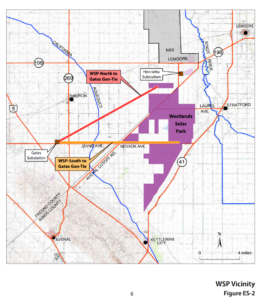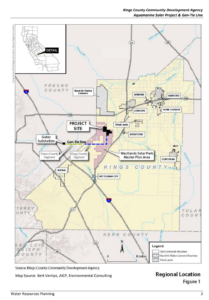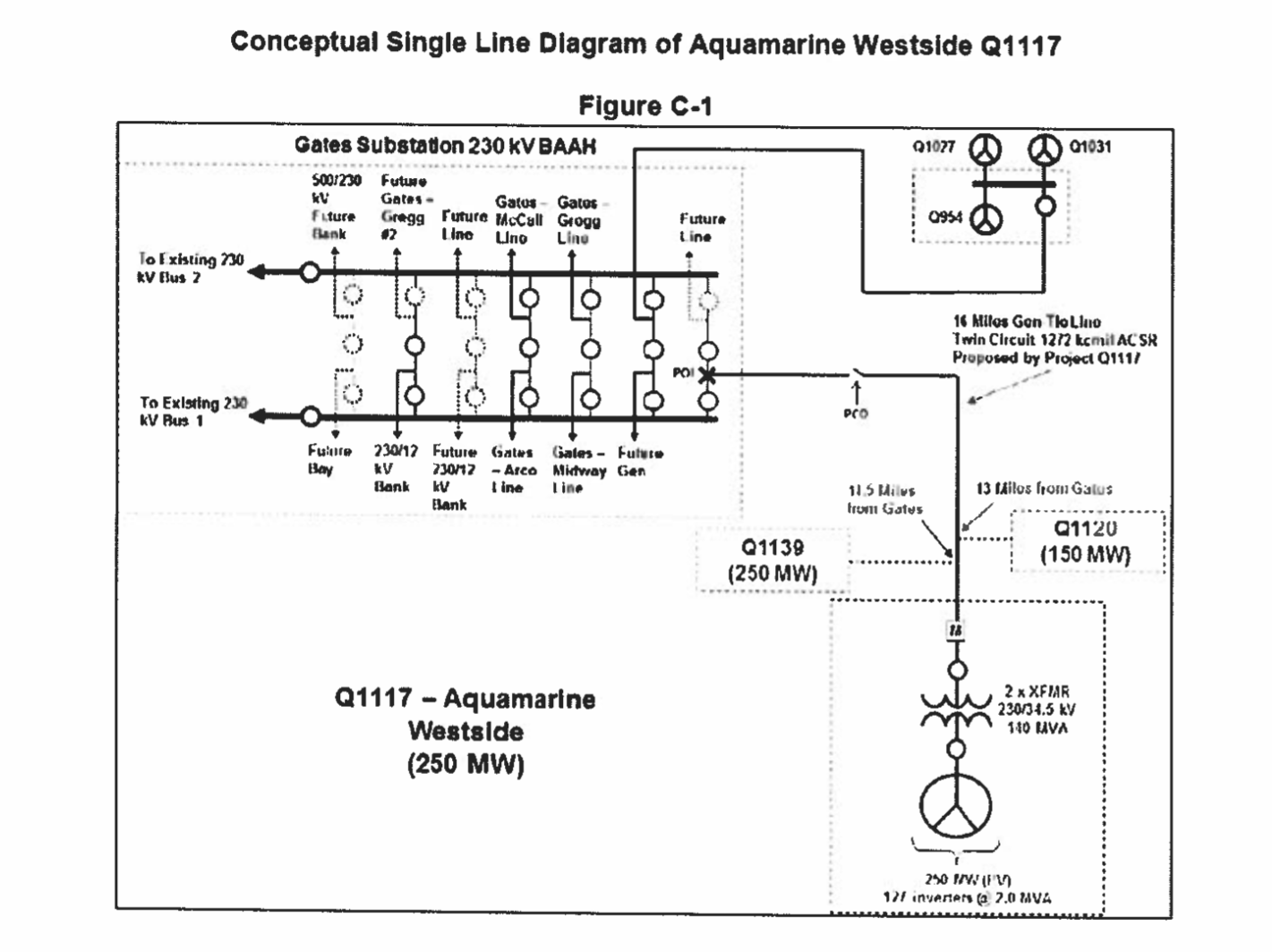On February 13th, Valley Clean Energy approved a power purchase agreement for 50 MWac worth of output from the 250 MWac Aquamarine Westland solar power plant. Pricing information was blacked out in the final agreement, though in an earlier contract version it was noted that if the seller of the electricity is unable to obtain a contract selling capacity rights to the facility, the price of the contract would be lowered by 0.3¢/kWh.
As of time of publication, no other groups were publicly known to have signed to purchase the output of the additional 200 MWac. Commercial Solar Guy reached out to the developer to inquire on this point. The facility is projected to go online by the end of 2021.
The facility, located in western Fresno and Kings Counties, is less than a tenth the size of the environmentally permitted Westlands Solar Park, which was first imagined as a 5 GW plant covering 50,000 acres more than a decade ago by the state mandated Westland Water District. The site’s got its own website – that looks like it hasn’t been update since 2017.
The developer – CIM – put out a press release last week stating the Aquamarine facility – “which has obtained all entitlement and conditional use approvals following a full environmental impact review” – had begun construction. The facility has completed all Pacific Gas & Electric requirements – feasibility, impact, and clusters studies, and an executed interconnection agreement – as per CAISO.
CIM currently projects the Westland Solar Park as having a 2.7 GW potential. The current largest solar park in the United States is the partially developed 800 MWac Mount Signal facility being brought online by 8Minute.
The plant will interconnect to the Gates Substation via a 230 kW transmission line. The line leaves the plant, and travels along 25th Avenue south for 2.5 miles, where it will where it will turn west on Nevada Avenue – extending an additional 6.2 miles to the Fresno County line.
The land was chosen was suggested to be a 5 GW solar farm by the Los Angeles Department of Water and Power in 2010. The land was drained when the city started taking water from Owens Valley in 1913. As of when it was originally reported on in 2010, the state had already spent greater than $500 million control dust storms.
Since then, heavy agriculture – per Westland Water Distrct – has left “selenium-contaminated and drainage-impaired farmland.”
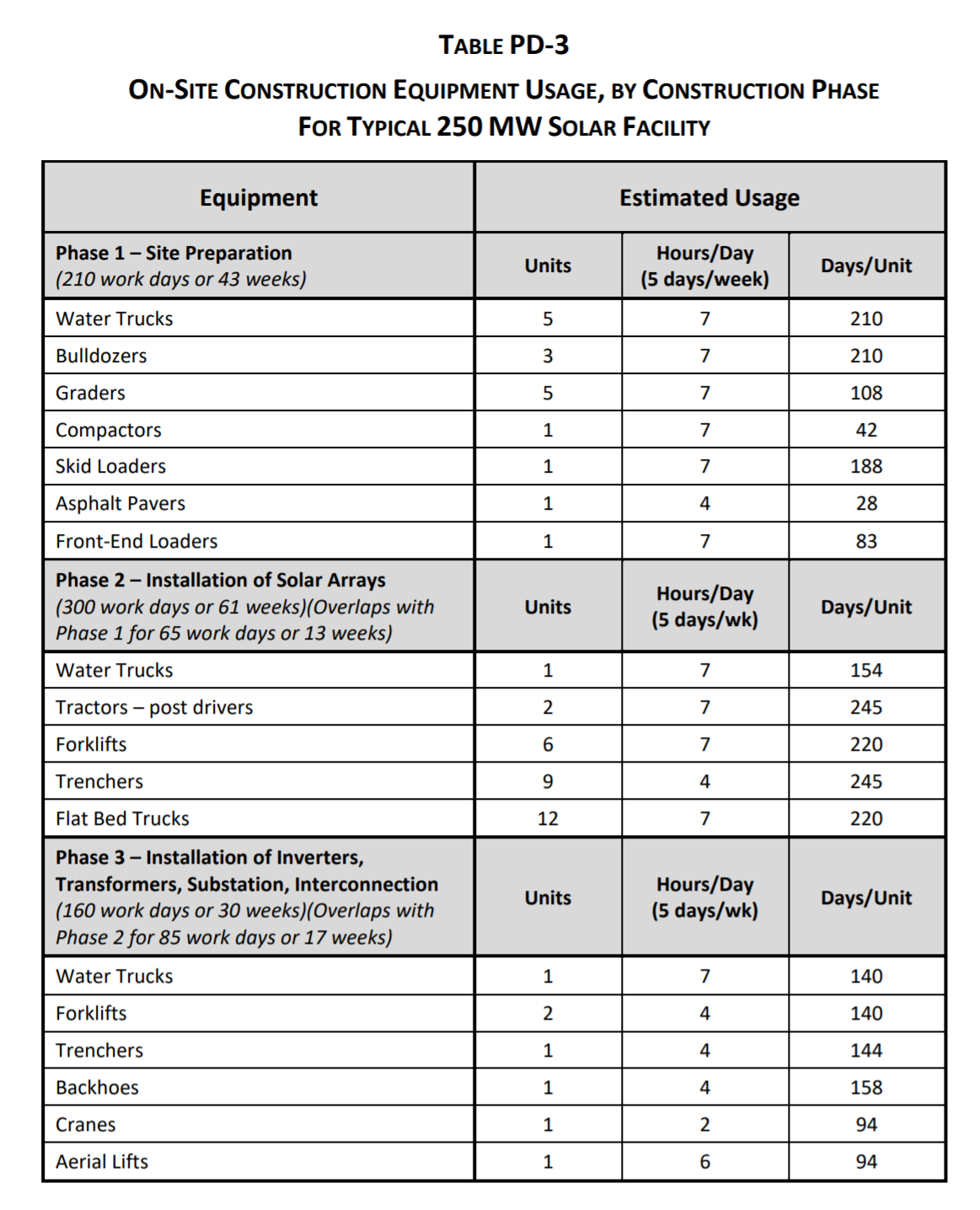
A construction-free buffer of up to 100 to 300 feet (or distance specified by CDFW) shall be established around the den. Once the biologist has determined that badgers have vacated the burrow, the burrow can be collapsed or excavated, and ground disturbance can proceed. Should the burrow be determined to be a natal or reproductive den, and because badgers are known to use multiple burrows in a breeding burrow complex, a biological monitor shall be present onsite during construction activities in the vicinity of the burrows to ensure the buffer is adequate to avoid direct impact to individuals or natal/reproductive den abandonment.
The project is projected to generate 134,684 MWh of electricity in the first year. Based upon a 50 MWac system sizing, this is an AC capacity factor of 30.7%. No DC system sizing information was available. A conceptual single line drawing was found in the final power purchase agreement approved.
